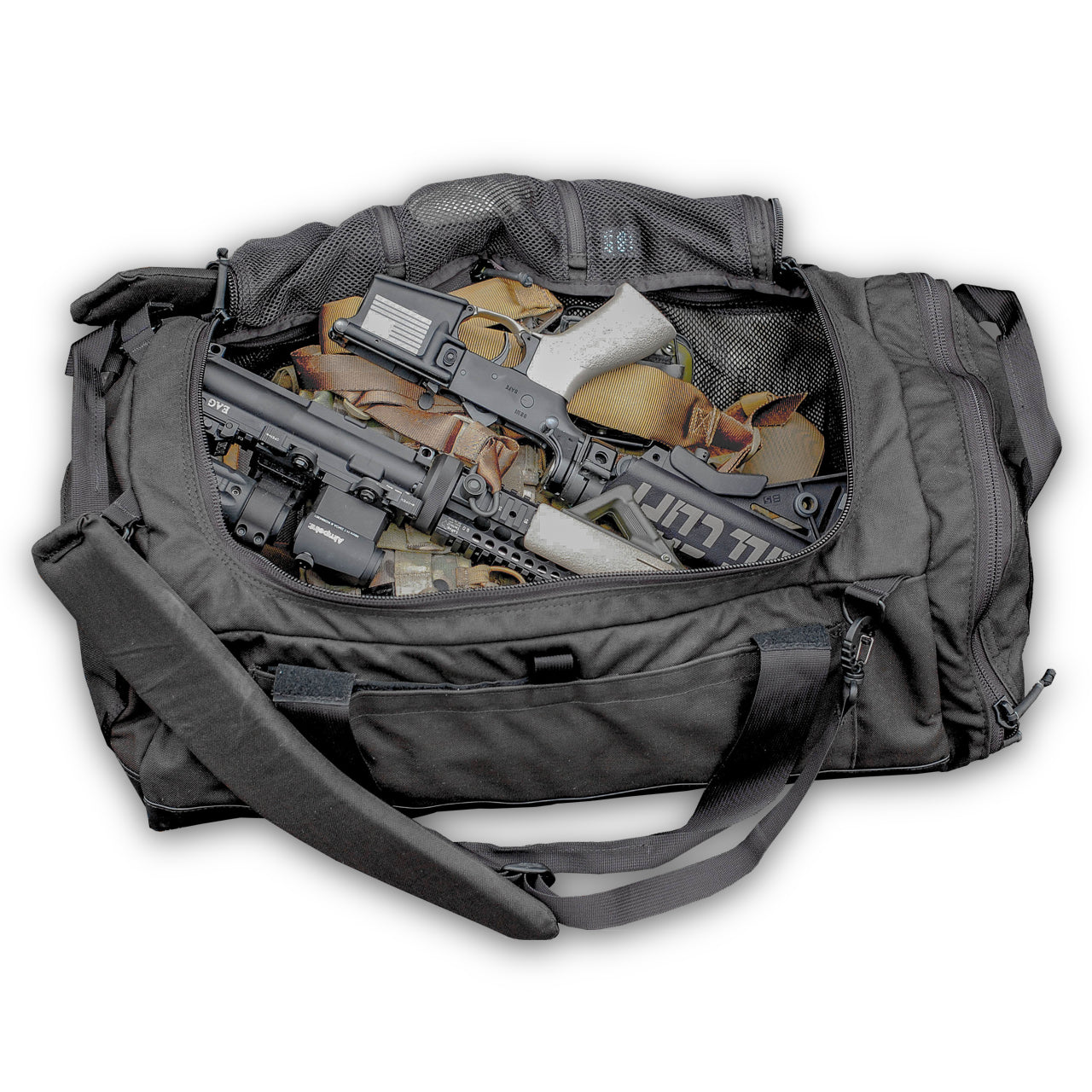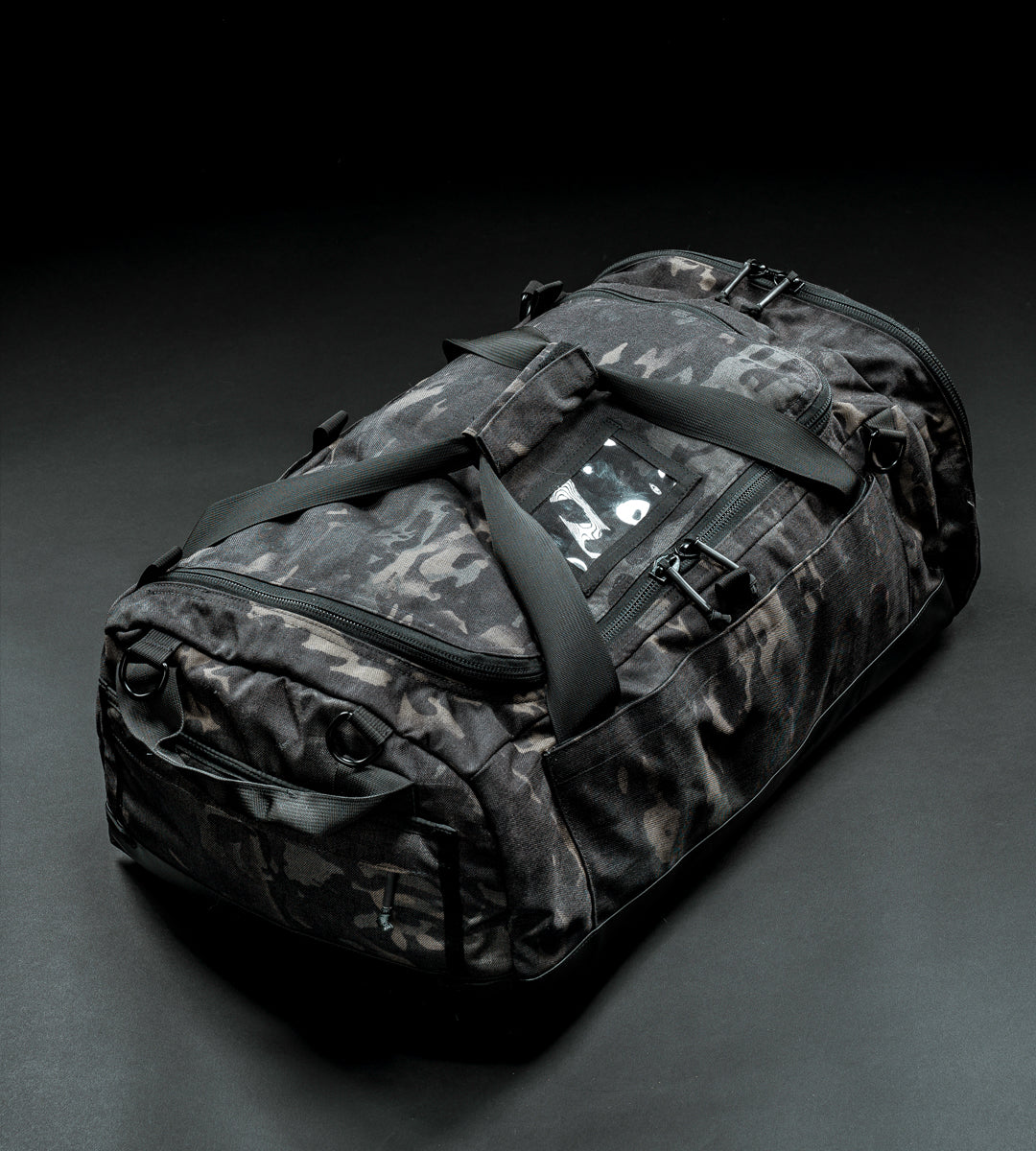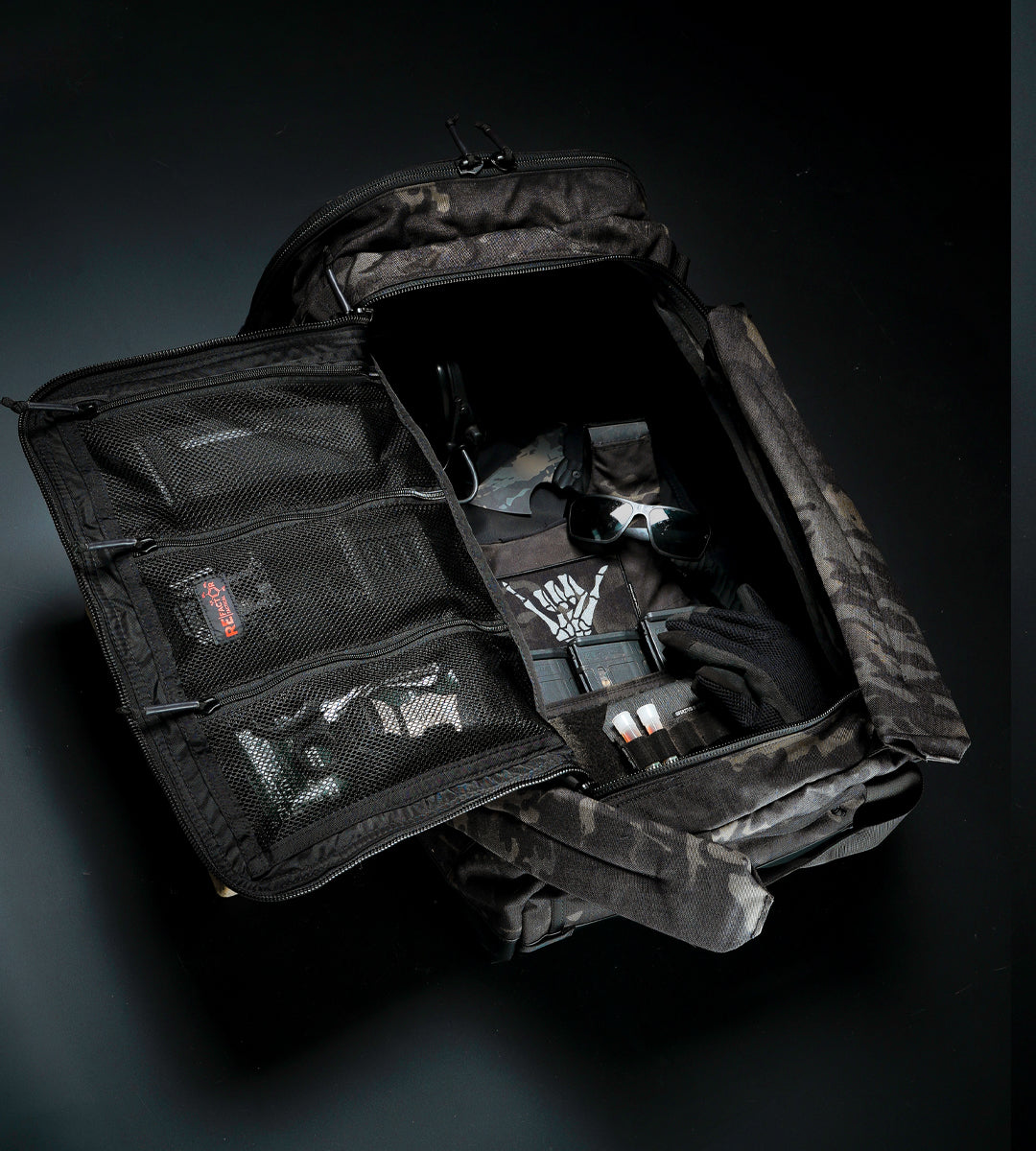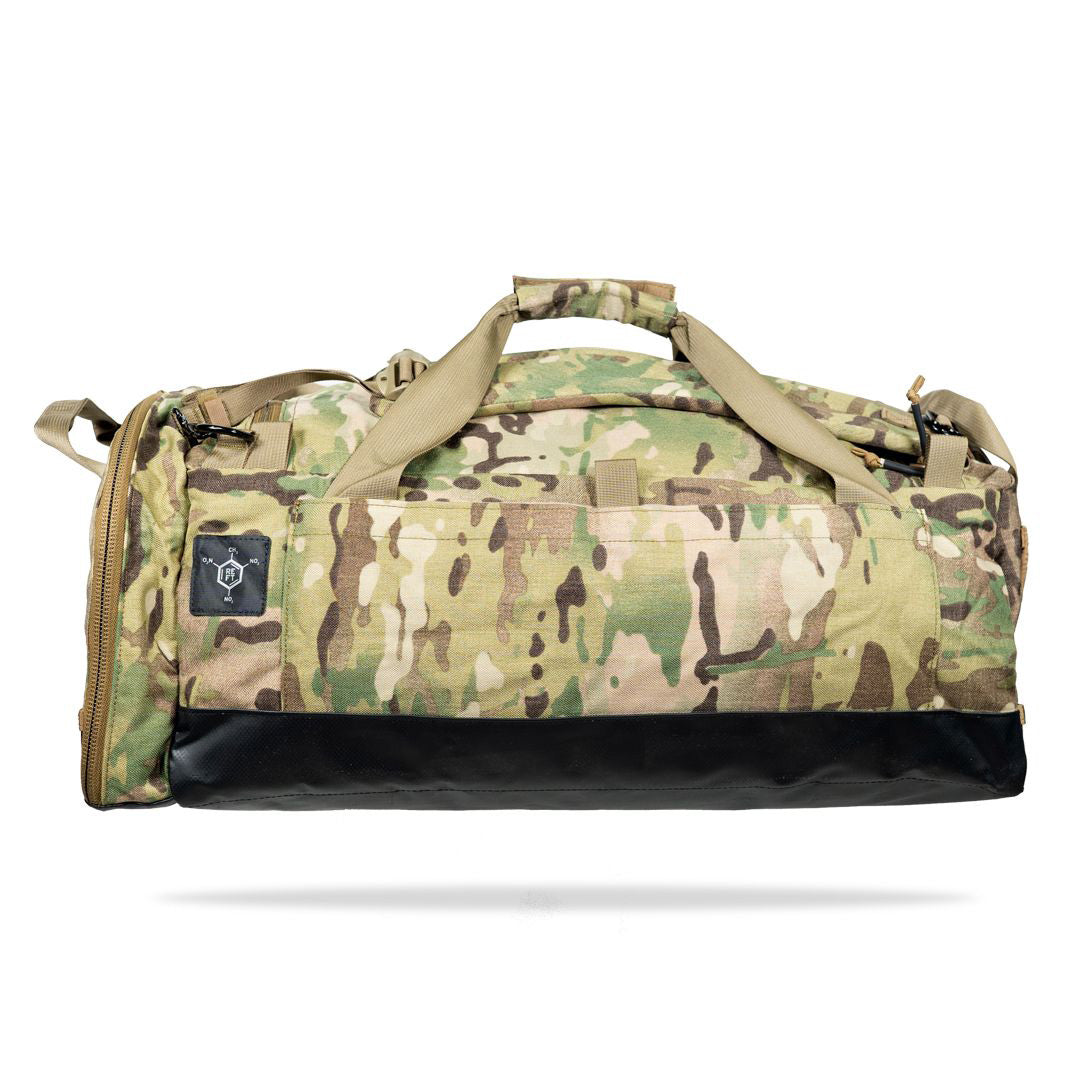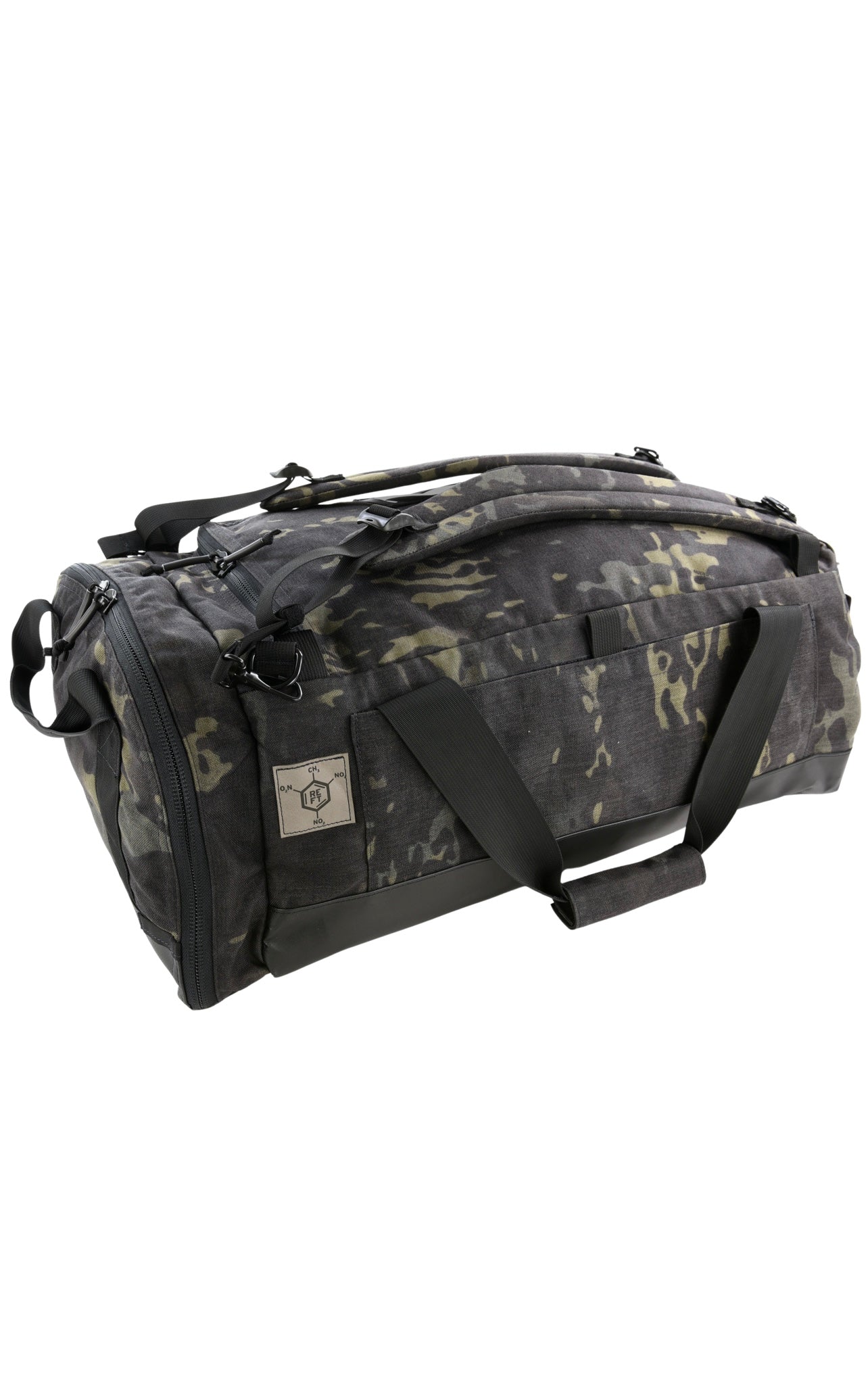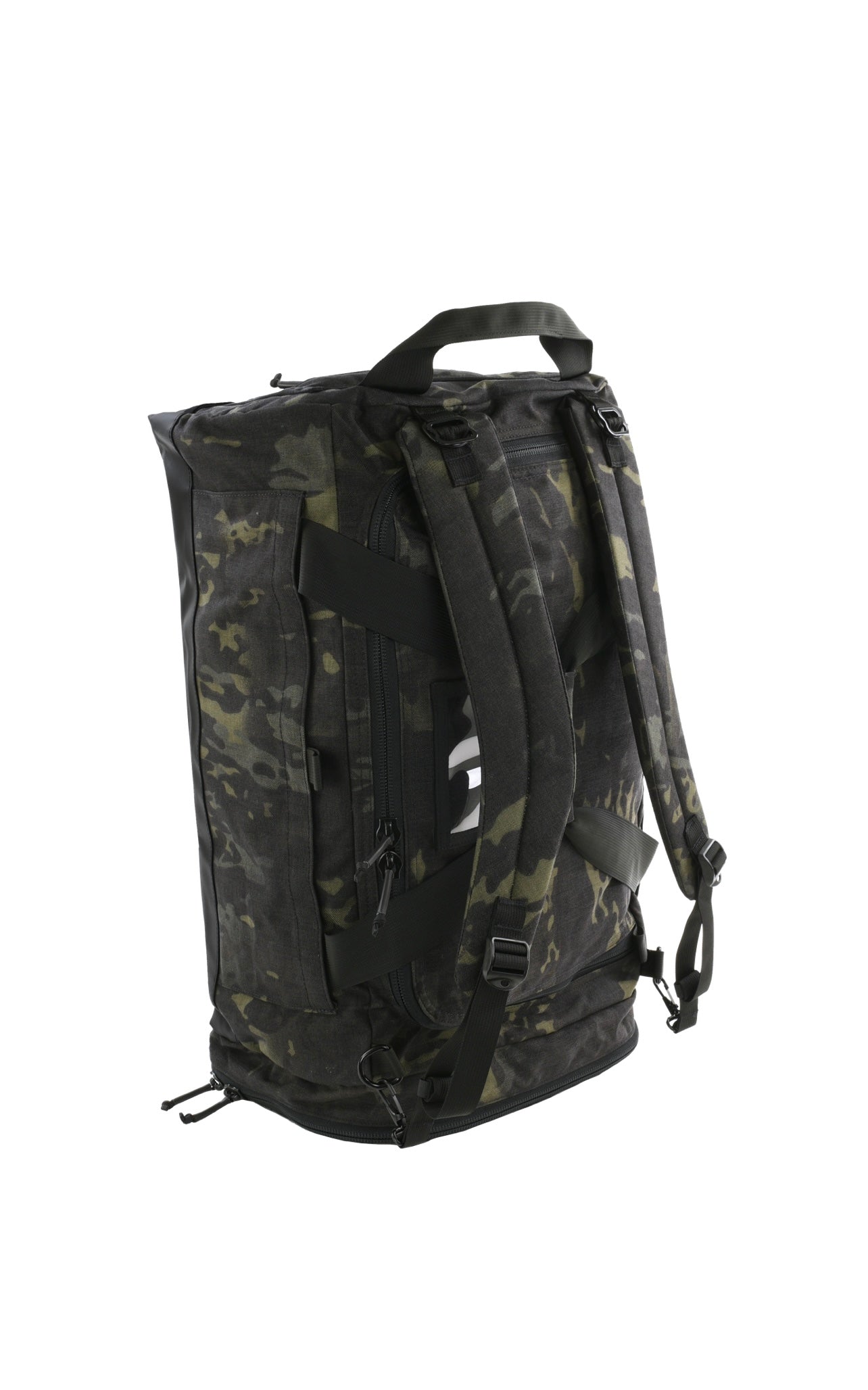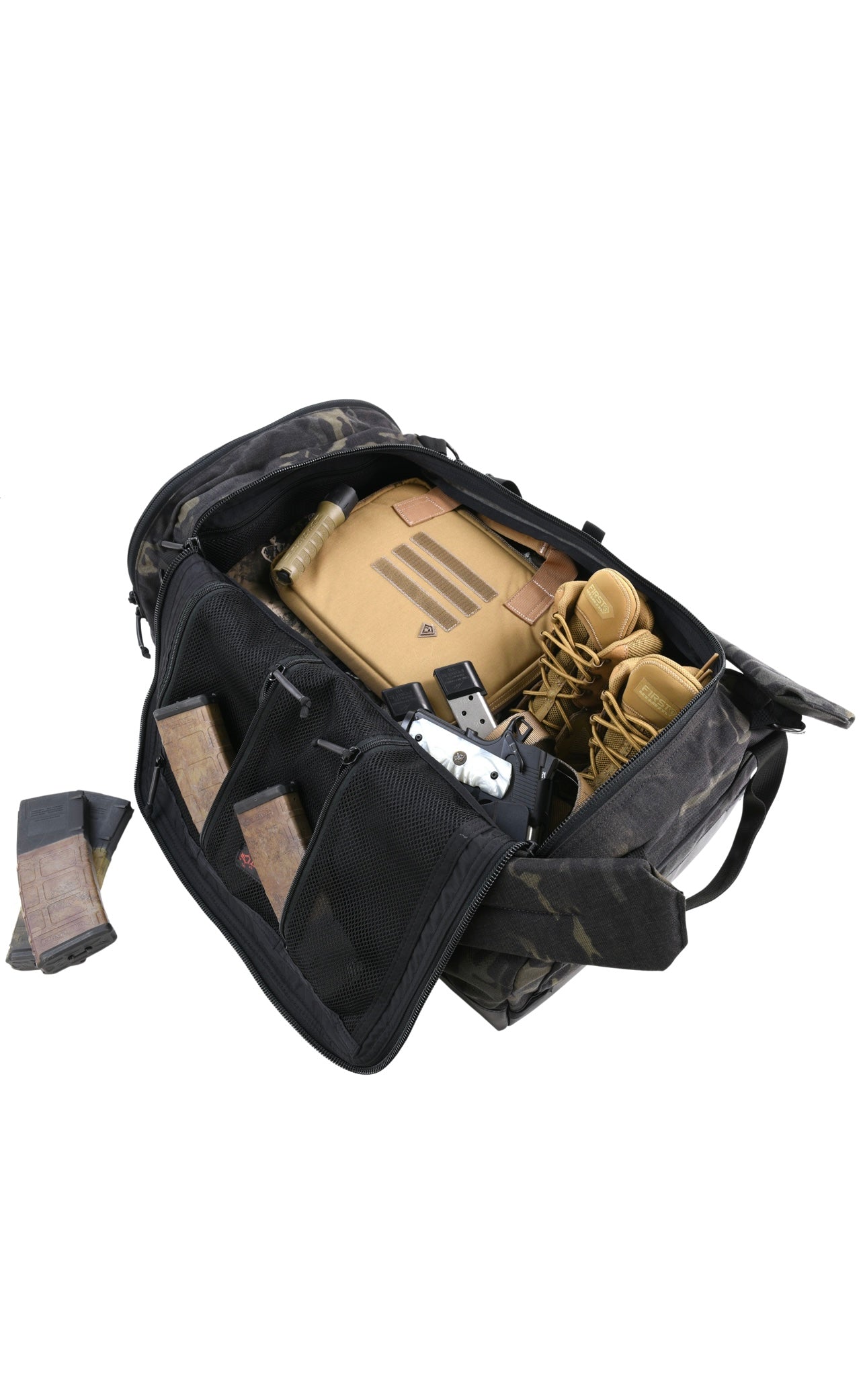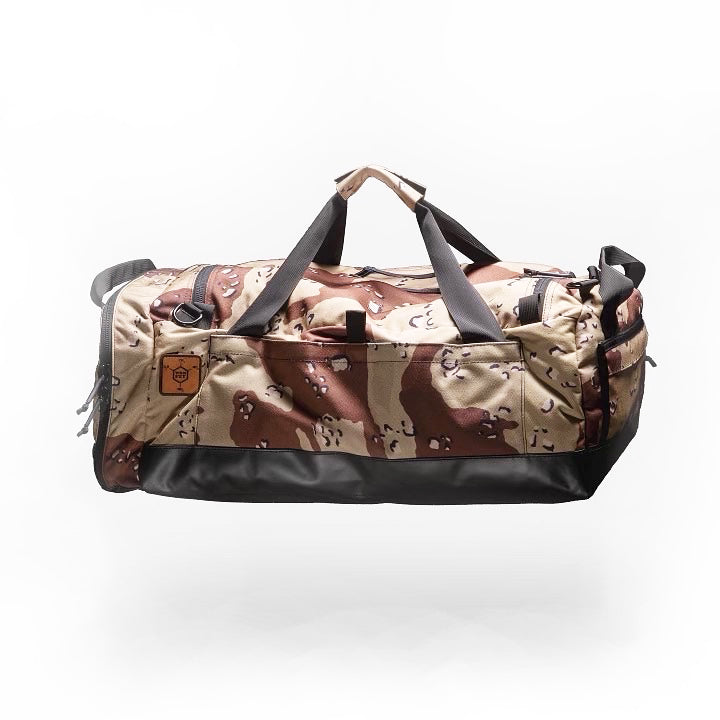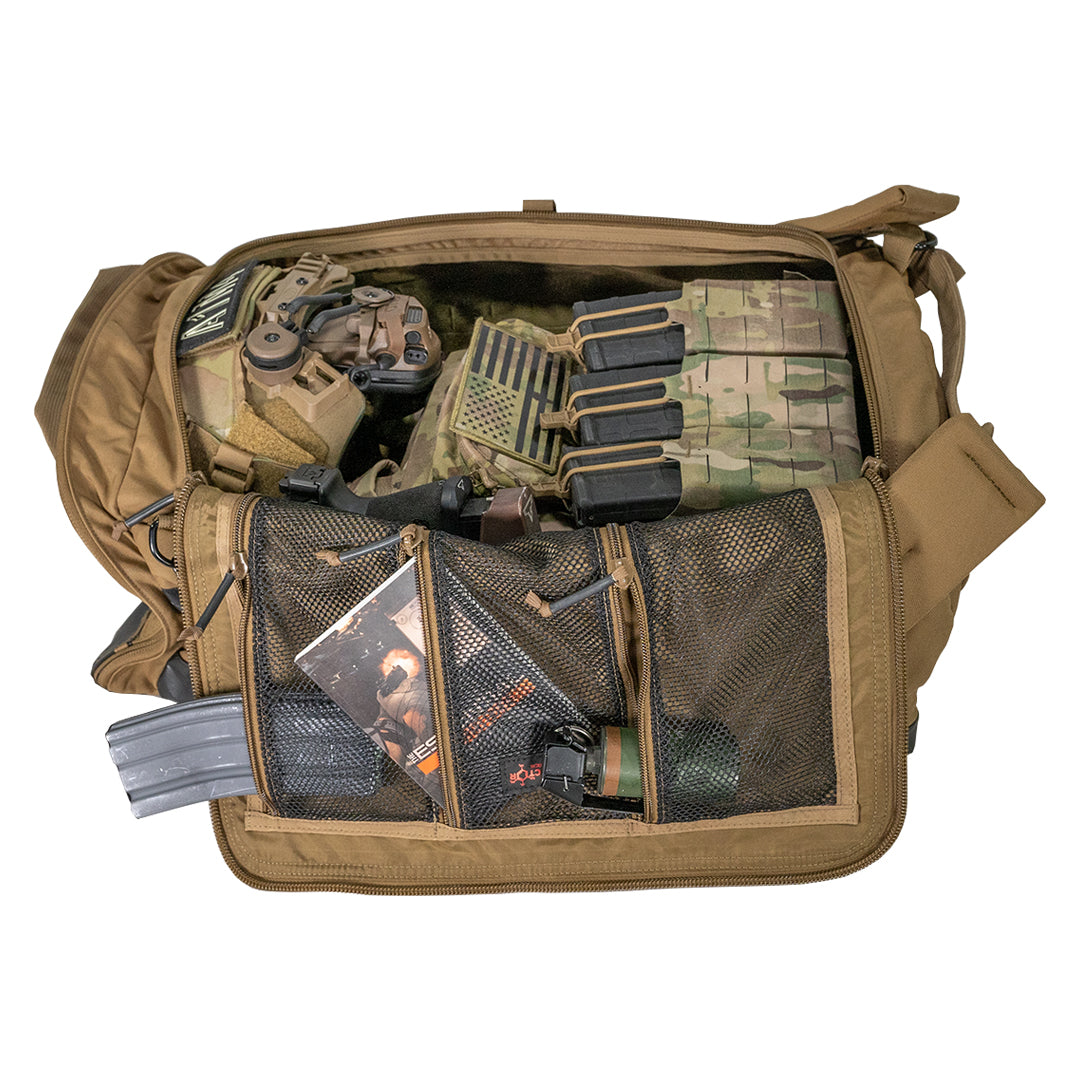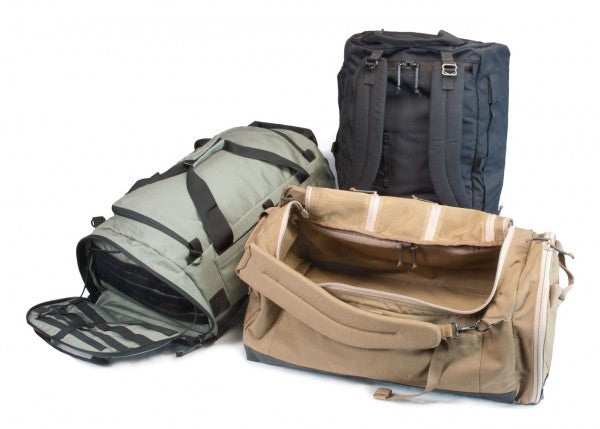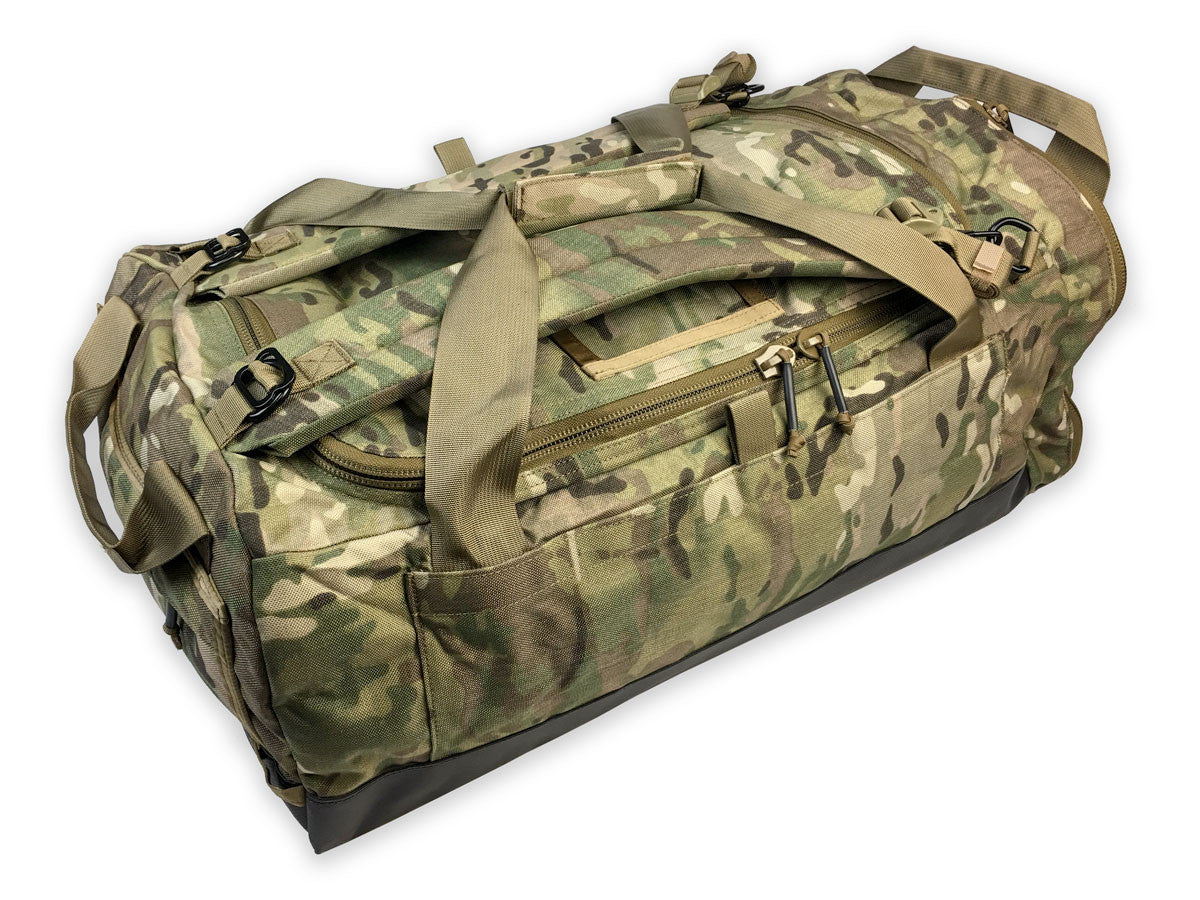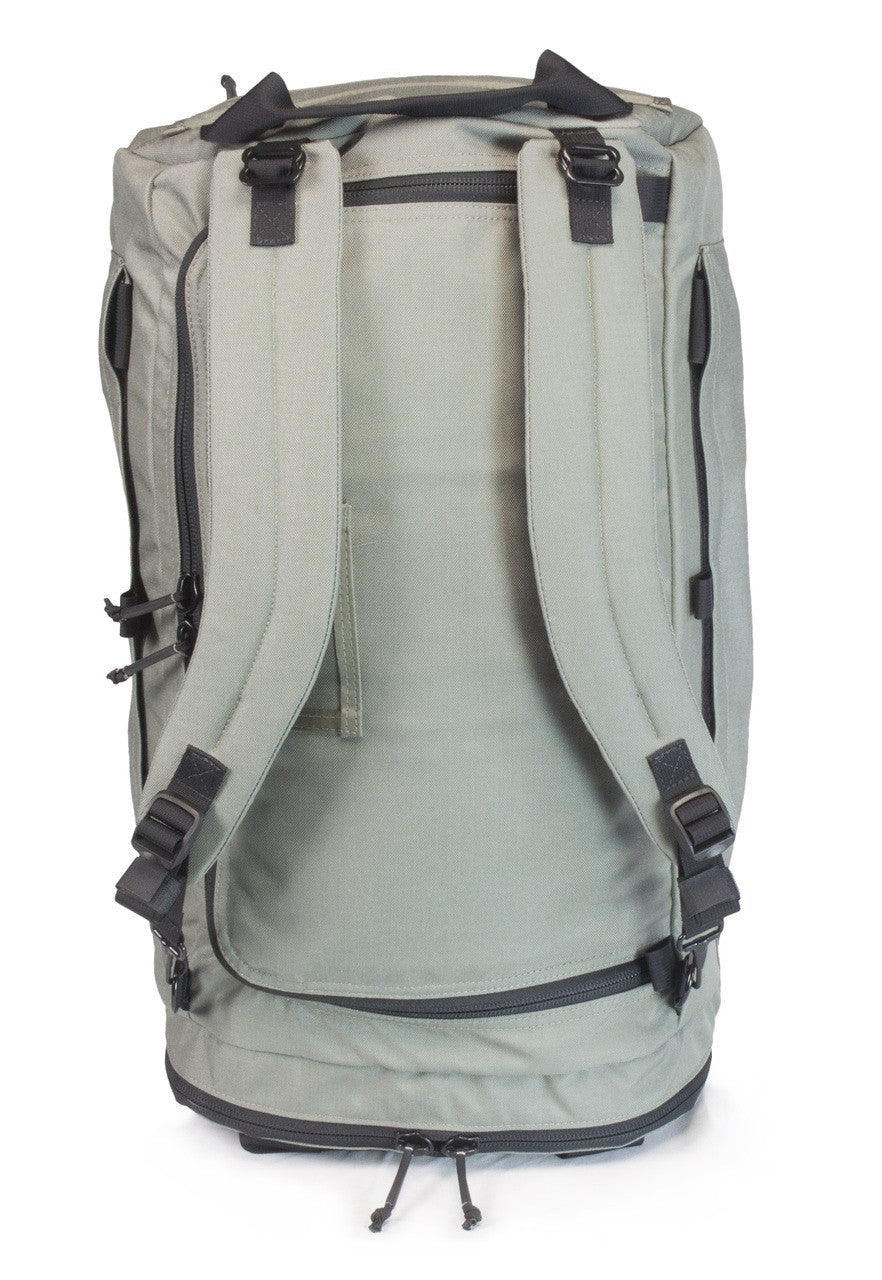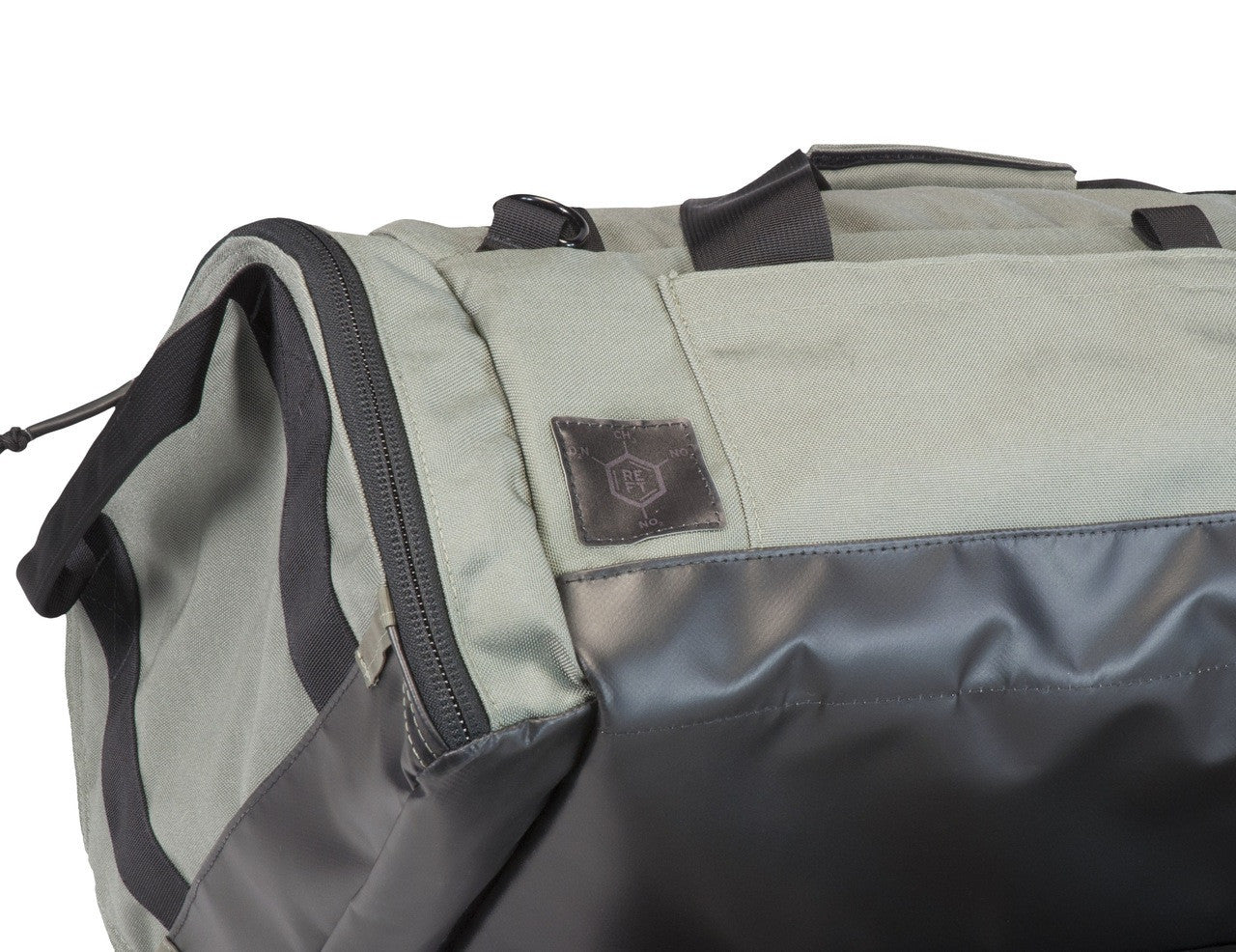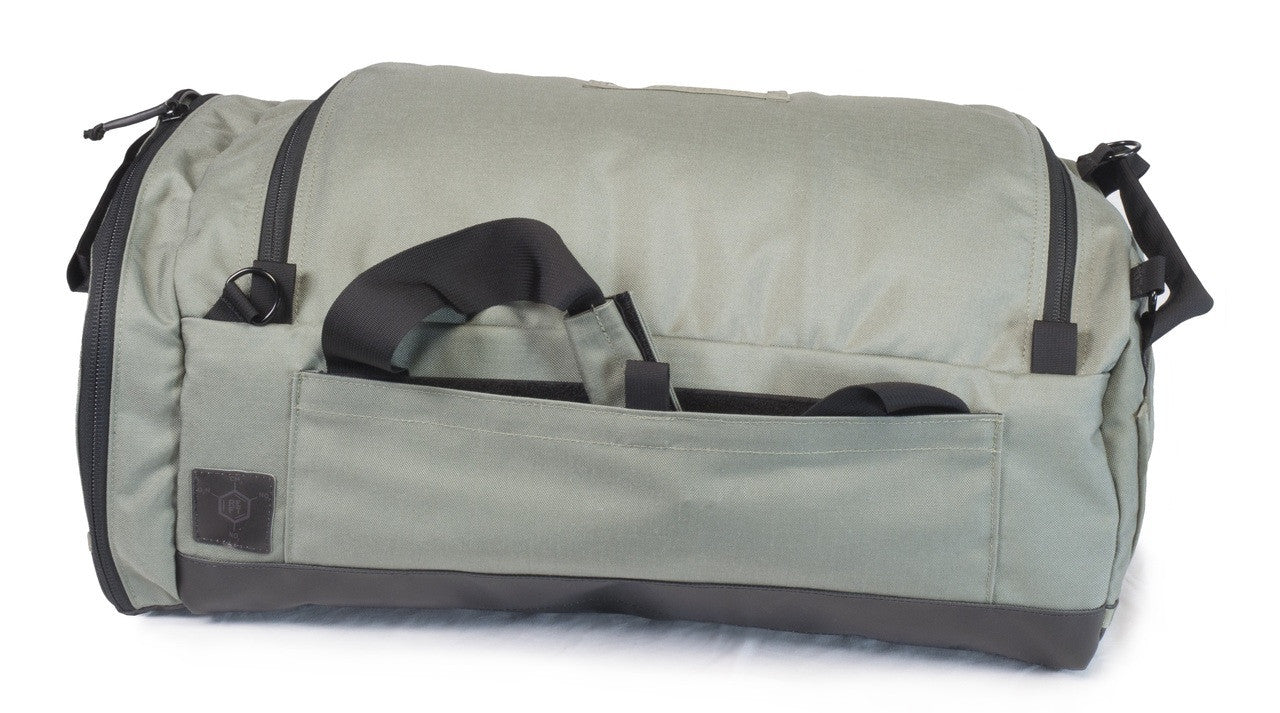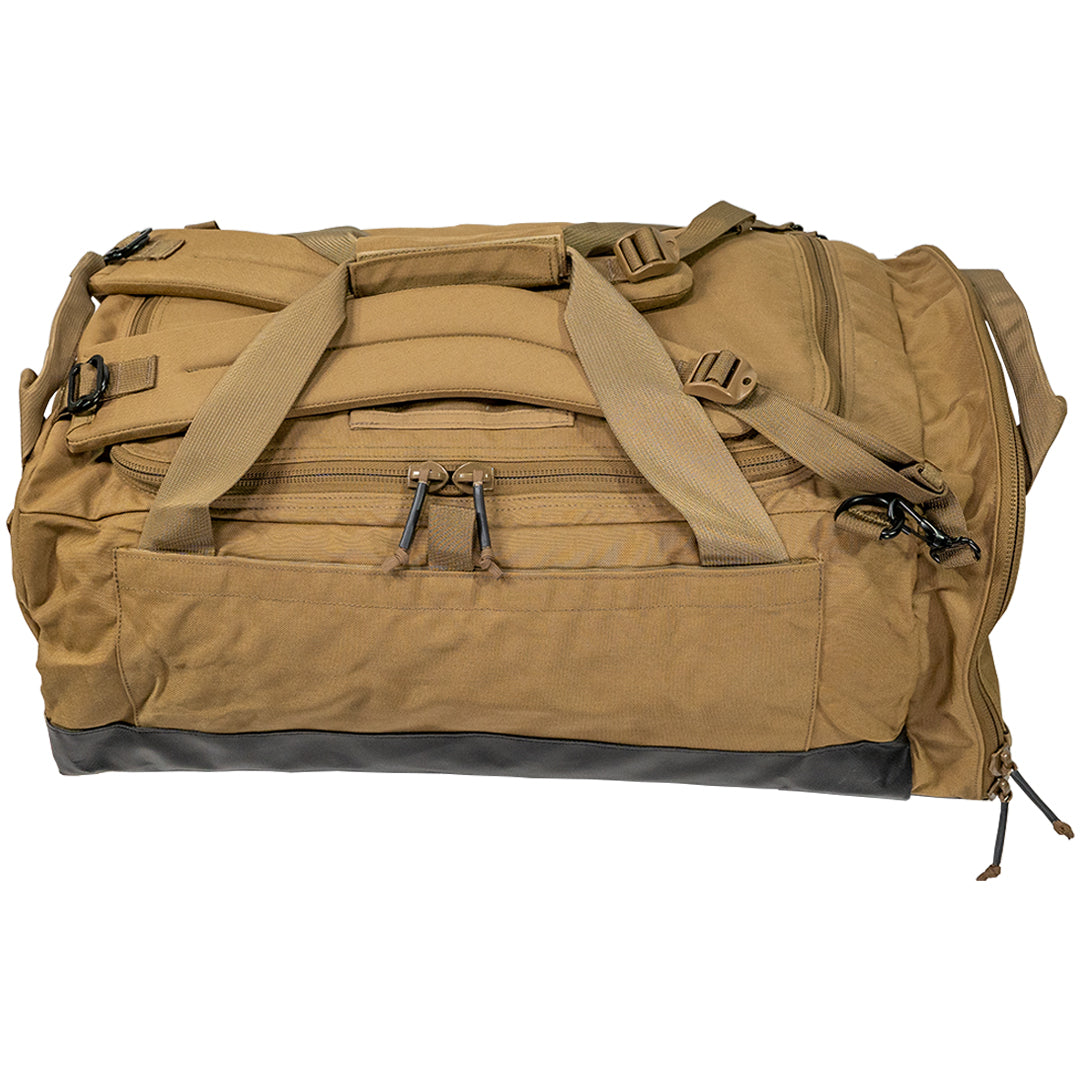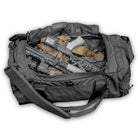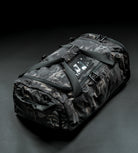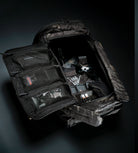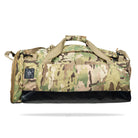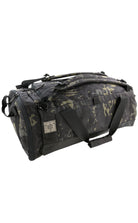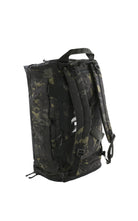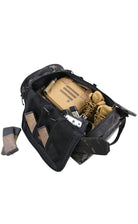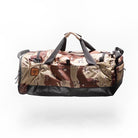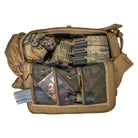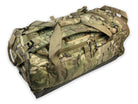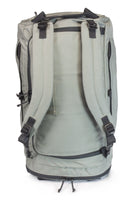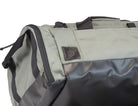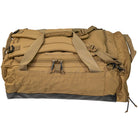Advanced Special Operations Bag™
Couldn't load pickup availability
The Advanced Special Operations (ASO) Bag is specifically designed for the individual who needs the ability to travel with a tactical bag, without the tactical look. The bag dimensions allow the maximum space possible that is still compatible for carry on luggage with most major US carriers. The 1000D Cordura exterior features an RFID blocking pocket that is specifically sized to fit phones, passports and credit cards to help protect your identity while traveling. The other end of the bag features our quick-access “Fight Pocket”, lined with MOLLE/Velcro for organization of pouches, patches and medical equipment. It opens using one-hand pull tab design and contains flexible ties to keep the pocket from flapping when in use.
The bottom of the bag boasts our durable waterproof vinyl, keeping your belongings dry in wet conditions. The extra large main opening of the bag is able to accommodate plate carriers, weapons and other oversized equipment. Seven large mesh pockets and a single MOLLE/Velcro panel line the interior for additional organization and storage. Removable backpack straps and integrated duffle straps allow for easy carrying and storage of straps when not in use.
Lastly, the ASO Bag has also been formally evaluated by the National Tactical Officers Association. It has been rated at an overall score of 4.5 out of 5 and has received the NTOA stamp of approval.
- 4.5 of 5 NTOA Rating
- Quick-access MOLLE/Velcro lined “Fight Pocket”
- RFID blocking pocket
- Extra large main opening compartment
- (7) Interior mesh pockets & MOLLE/Velcro mounting panels
- Removable backpack straps & concealable duffle straps
- 1000D Cordura exterior w/vinyl waterproof base
- Sized for carry-on travel - 25"x15"x10" (56L)
- Made in the USA
- All sales on preorder items are final
What Makes a Good ASO Bag?
What makes a good ASO bag? Usability and durability. Unfortunately, that makes it hard to determine which is the better ASO bag, because most companies advertise all the things you can do with the bag and how durable it is. But, have you stopped to think why one ASO bag outshines the others? Or, why any style of tactical bag is better than another? Sometimes, we just eye a product and say, yeah, that’s the one for me. But, there’s so much more that should go into your bag selection process, no matter what kind you’re looking for. The following is a list of what makes an ASO bag top of the line and how to pick the perfect tactical bag for your needs.
Usability
The more you can do with a bag, the better it is. Okay, this is true with most things, especially if it involves you spending money. If your bag can be a duffle bag, a backpack and one of those cool roller bags, you’re getting more use out of it. But usability doesn’t just refer to how many different ways you can transport your bag. Yes, it’s nice if you want to completely load the thing down if you have some sweet wheels. But, let’s be honest, that isn’t always convenient. What’s the next best thing? To carry on your back of course—actually, someone else carrying it on their back would be the next best thing, but that’s probably not going to happen. However, anything you carry on your back immediately poses a disadvantage to you. If you have any valuable gear, it’s more likely someone could get it. Or, if something went down, it would be harder to get to your gear, whether it’s more ammo, a second weapon or medical equipment. If your pack were more user-friendly, those pockets—if you organize correctly—would be easily accessible with the bag still on your back.
When you’re looking for your perfect bag, also keep in mind what you want to carry in your bag. Will it be gym clothes or lightweight gear? Then maybe a big heavy-duty bag isn’t’ what you need. When you buy your bag, think about what you plan to use it for. If you are going to load it down with heavy gear, like a plate carrier, weapons, ammo, a helmet, etc., then heavy-duty is a must.
No tactical bag is very tactical if you can’t use it. If your gear is unorganized, you can’t fit all your equipment, or it’s not accessible, then you’ve lost the factor that makes it tactical. Don’t be that guy. When you consider usability, consider yourself. Can I get to the equipment I need easily? Can I fit all the things I need in my bag? Is my bag comfortable? If you can’t answer yes to all of these questions, you need to reevaluate and reorganize your bag. If it takes you completely unpacking your bag every time you need something because all the important stuff is at the bottom or because you don’t remember where you put anything, you have a problem. If this is you, you’ll need to reorganize, so the bag is more user-friendly for you.
Durability
Durability, like usability, comes in a lot of different forms. Some companies advertise durability based on the stitching. Others, based on the fabric. Then, you have some companies who have it all, such as RE Factor Tactical. Durable stitching, strong fabrics, and waterproofing material—now that’s durable. If your bag can stand up to the elements as well as your lifestyle, you’ve got a pretty good bag. Because let’s face it, we aren’t exactly treating our bags like newborn babies. We throw those things in and out of vehicles, toss them on the ground, sit on them, lay on them, use them as pillows out in the field, and sometimes we even drag them along the ground—it isn’t pretty. What we put our bags through may seem daunting to most.
If you don’t have a durable gear, the next thing you know, you’re dragging your 100lb bag on the ground and then everything falls out of the bottom. That’s not an ideal situation. So, how do we prevent this? Do we stop dragging our gear and treating it like it beat our mothers? Never! Instead, we buy better, stronger, more durable bags that can stand up to our lifestyles.
Companies with truly durable materials will be using specifically rated fabrics such as 500D-1200D CORDURA. This is a type of nylon. Something like Kodra or polyester isn’t considered durable material. So, if you have a company promising durability, but the tag says, made from polyester, you may want to look elsewhere. But, don’t’ stop there. Look at the zippers and look at the straps and buckles, because it’d be a shame if your straps broke when you were trying to handle some real crap.
How to Pack a Tactical Bag
There used to be a time when only military personnel owned tactical gear, including bags. Other people didn’t need that stuff; at least they weren’t aware they did. Today, tactical bags are used for so much more than deployments. You’ll see hunters, gun enthusiast and hikers alike carrying tactical bags. Why? Because they hold up, and they tend to have more pockets and organizational options than a standard duffle bag or backpack. Many of these bags come with places specifically meant to hold your pistol in place; you won’t find that in a standard backpack. But, with all this new space, do you know how to pack it?
Packing isn't just about organization. It’s about accessibility and comfort. If you can’t access the most important items in your bag easily, then it’s counterproductive. If you’re so uncomfortable that you have to stop and rest your bag every half-hour, then again, you’re counterproductive and you might as well throw anything sounding even remotely tactical out the window. Pack your bag with the heavy stuff on the bottom and the lightweight stuff on top. Pack your essentials in easily accessible locations. There’s no reason your tent should be on top. One it’s heavier and two, you shouldn’t need it until the end of the day.
How to Pack a Range Bag
Packing a range bag is quite a bit different than packing your tactical bag. Mostly, because it’s not intended for survival—though we know the stuff in there could at least help you survive a sudden zombie invasion.

When you pack your range bag, you’re packing for a day at the range or maybe a shooting competition. Either way, there’s some stuff you absolutely have to have. Such as ear pro, eye pro, trauma kit, ammo, cleaning kit, multitool, etc. When you pack a range back, pack it with your specific needs. Are you practicing timed drills, you’ll need a timer. Are you going to a range that doesn’t provide targets, then you’re going to need to pack some. Then there’s always the list of non-essentials, hygiene items, lip balm, extra snacks, hand sanitizer, etc.
Packing a range bag is all about your needs and preferences. You aren’t going to war—yet, so just be practical, take what you need for that day and maybe a few things you want, like a small foldable chair.
How to Pack a Tactical Backpack

When you’re packing a tactical backpack, you have to keep in mind its intended purpose. Will you be using it as a go bag? Or will it be for day hikes? The answer determines not only the style of backpack you want but also how you plan to pack it. If it’s going to be used as a day hike bag, then it probably doesn’t need to have as much space; whereas, a go bag needs to hold at least 72-hours worth of equipment and supplies. If you’re using it as a gym bag, then you probably don’t have to worry about comfort, but again, if you’re going to be carrying it on your back for a lengthy period of time, how you pack it is going to be huge. You want a bag that has comfort in mind, such as adjustable shoulder and waist straps. You’ll want to pack it similar to most other tactical bags. Pack it with comfort and accessibility in mind. If you can’t get to it quickly and effortlessly, then you might as well not have tactical in the name, because it just becomes any other backpack on the market at that point.
How to Pack a Rucksack

How to pack a rucksack is definitely a hot topic. These sacks are usually packed down, heavy, and carried for a lengthy distance and time. The design and how you pack your rucksack can truly make or break you. If you have to ruck 26 miles, doing so with a ruck that digs into your hips is going to make for a terribly painful day. Packing heavy stuff on the top will put your back under a lot of stress, causing even the shortest ruck to become painful. When you pack your bag, do so with the heavy stuff on the bottom and the lighter stuff on top. When you pack the bag, do so horizontally. This helps keep your gear equally distributed. Pack your most essential things in places that are easily accessible. And remember, no matter how well you pack, if the bag isn't built with comfort in mind, you’re probably going to run into a little trouble. Pick a bag with a good frame, and make sure your heavy stuff is packed closely to that frame. A padded waistband and shoulder straps are great too in adding to your comfort. Trust us, this is important. Even the biggest badest military guy will tell you this. Because no one wants to ruck in pain when they don’t have to.
Survival Gear: Go Bags
If you’re a traveler, an everyday same place, same routine type of person, if you’re a homebody, have kids, pets or you simply wake up breathing, then you should consider putting together a “go bag”.
The point of a go back is for emergencies. Say your house catches on fire, a natural disaster occurs or you find yourself stranded off-roading; a go bag would ideally have all the necessities you need to get by for a few days.
Go Bags, unlike other bags, are not as specific. A go bag can literally be any bag you want. So long as it makes sense for you. It doesn’t need all the bells and whistles, and frankly speaking, it shouldn’t. What it needs to be is comfortable, something you can see yourself wearing for a few days and inconspicuous. You don’t want your bag saying, I’m in the military and I have the best stuff, because that’s how you A. get robbed and B. people end up taking advantage of your supplies, leaving you with nothing left to care for you and your family. Consider packing your stuff in a regular school style backpack, especially if you’re prepping for the end of times or in a case where you’re bugging out because of a natural disaster. You may know what you’re doing, but you don’t want everyone else knowing that.

What to Pack in Your Go Bag
Again, a go bag can be any bag, really, but we recommend it being able to hold at least three days of supplies, have back support and be no more than 20% of your body weight once it’s packed.
Children and Pets
So, what goes in your bag? Or what do we classify as a necessity? Well, this can depend on a few things. Do you have a pet or a child? Food, water, clothes and a first-aid kit are among the most important things you’ll need in your bag, but if you have a pet you should add a baggie or two of food for your dog as well. And please, don’t forget about your kid! If your child is too young to carry their own bag, you’re going to have to carry their stuff too. Sadly, pets and children are often forgotten about when packing a go bad and since pets and young children can’t fend for themselves, this can be a tragic thing to overlook.
Clothes
For a standard packing of your go bag, it’s recommended you have clothes for the season you’re in. If this means changing out the attire in your bag every season, then you should do so. I doubt you want shorts and a t-shirt when it’s 10 below and snowing. Also, consider packing clothes you normally wear to work. Say your house were to burn down while you were out at the pool with your kids, you still have to go to work and the last thing you were wearing at the pool may not be appropriate for the office.
Water
Now, let’s address the water situation. This may be one of the things people have the hardest time with when putting their go bag together. Questions like, how much water do I pack? Can I keep water stored in a bottle for an extended period of time? Won’t the water go bad?
How much water you pack depends on a few things, such as how much weight you can carry and how much water you should be consuming in a day. This means we can’t give one answer for each person because we're all different. If you visit Camelbak’s website they have a pretty detailed calculator to help you determine how much water you need to consume based on your gender, height, weight, and age. It gets a little personal and asks about your normal urine color, how much you sweat and the weather condition.

Nalgene bottles are perfect for your kit, BPA free for those of you concerned, and if you fill it to the top it creates a good seal from the oxygen that makes your water go bad. Of course, you can do this with just about any water bottle, we just recommend them for durability and its lightweight. One standard 32 oz. Nalgene bottle filled is about 10% of a 100 lb. person’s body weight…so keep that in mind when deciding how many to pack. Consider packing a single-walled stainless steel bottle as well, you can fill it with water and use it for cooking if need be.
Food
When packing food, obviously you want non-perishables. Consider packing lightweight products, but enough to get you through a few days. Pack some snacks high in protein and energy, such as Clif bars, trail mix and jerky and pack about six-eight of these bad boys for one person. Also, you’re going to want real food—if you can get your hands on about three Meals Ready to Eat (MREs) or some dehydrated food you can bring back to life with a little water. Some products out there include Backpacker’s Pantry. Also, take into consideration if you have children, and pack food they actually like eating. Kids can get cranky too, and having something they like to eat can make a world of difference.
First-Aid Kits
Finally, let’s talk about the first-aid kit. Your first-aid kit doesn’t have to be fancy. You need the normal supplies: band-aids, triple antibiotic ointment, Motrin, Benadryl, etc. You can get these at places like Wal-Mart or the Red Cross, you can even build your own. Just remember, if you have over the counter (OTC) medications you take on a daily basis to have those in there too. If you’re on an aspirin regimen, have aspirin, if you take migraine medication daily, have that in there…get my point?
Nice-to-Haves
Now that you’ve packed your bag with all the necessities you’ll need over a few days, you can think about the things that would be nice to have in your pack. Think about various flashlights and headlamps, battery packs, different types of water filters, radios, knives, and map packs. Pack things that suit the environment you’re in. For example, if you live in New York City, you’re going to want a map of the city streets, back roads, and ally ways. Nice-to-haves are up to you but remember to pack smart.
Key points to take away from this: Any bag will do, but try not to stand out, don’t pack your bag to be any heavier than 20% of your weight, pack clothes for the season you’re in and PLEASE… don't forget about your kids or pets if you have them.
What’s the Best Tactical Bag?
Maybe you aren't looking for a go bag, that's okay. Whatever bag you're looking to add to your inventory, remember, the best tactical bag is the one that works for you. If you’re building a bug-out bag, need a tactical backpack, want and ASO bag or need a rucksack for your next ruck march, you need comfort. If it’s not comfortable, it’s not the right bag for you. Your bag also has to be organized. If they bag you buy doesn’t give you a lot of options for organizing your gear, then it probably isn’t the right bag for you. With all that being said, look for a bag that not only fits your needs, meaning what you plan to do with it but also look for a bag you can wear or carry comfortably and get the most use out of.
Read more here...
https://blog.refactortactical.com/blog/best-tactical-duffel-bag/

